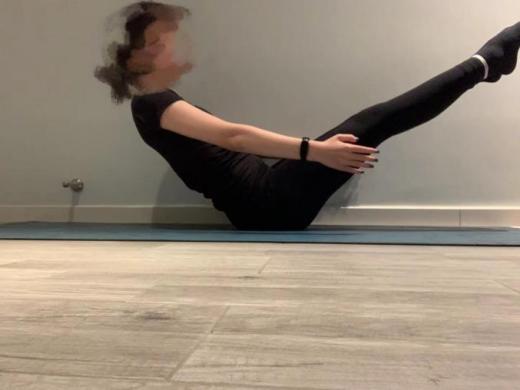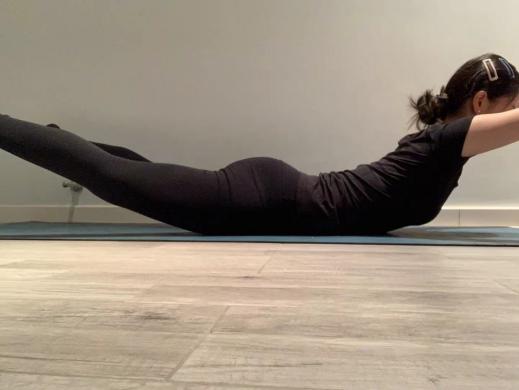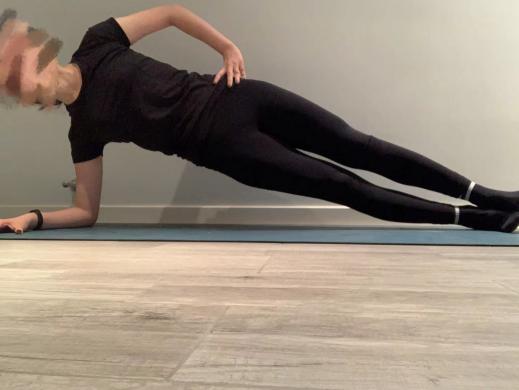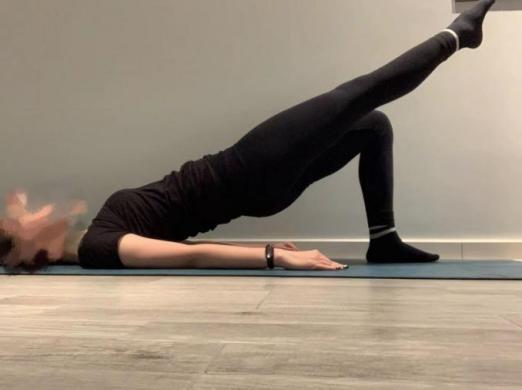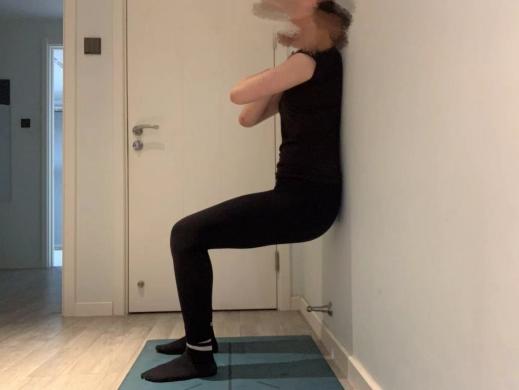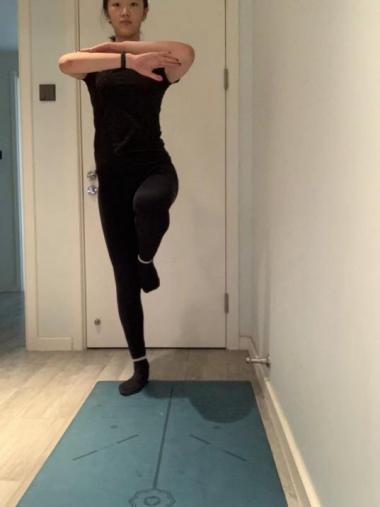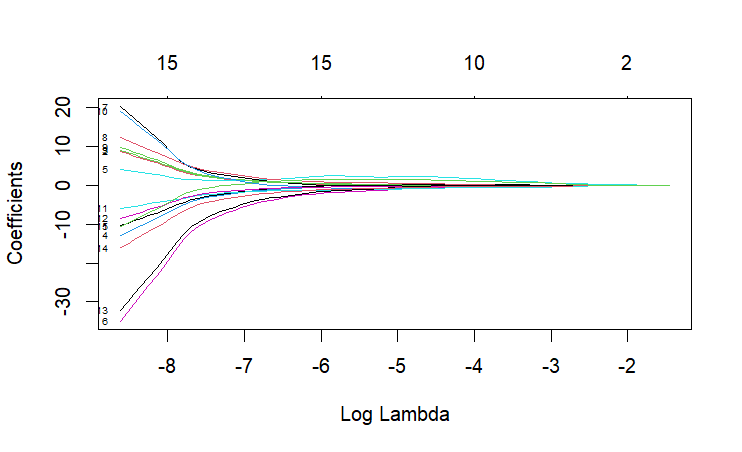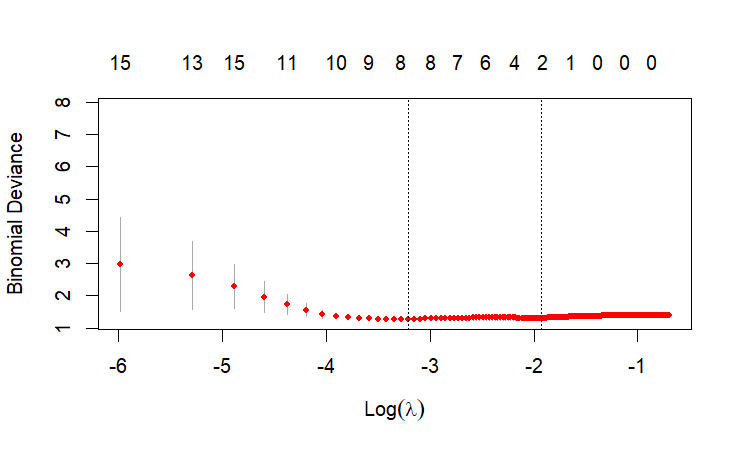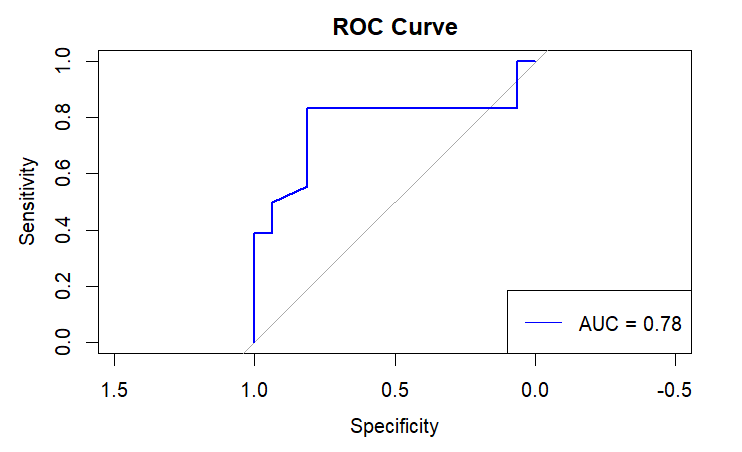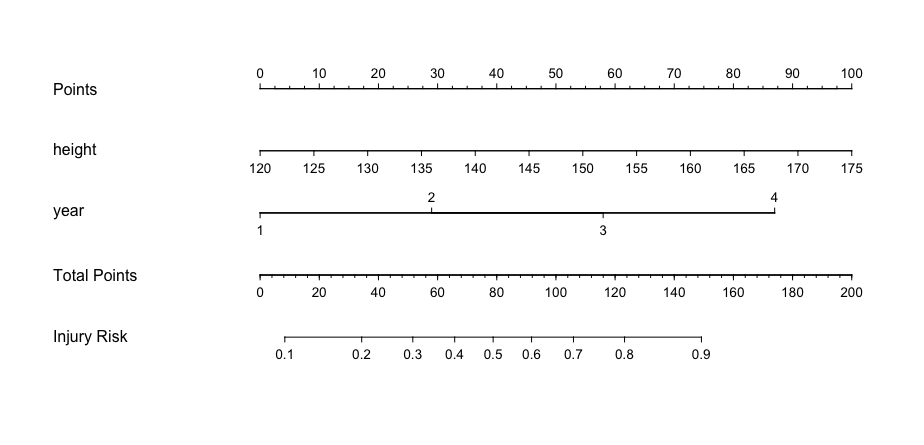1. Introduction
1.1. Background
Figure skating has traditionally been one of the most popular ice sports at the Winter Olympics. At the 2022 Beijing Winter Olympics, the figure skating program has attracted the attention of many spectators and inspired more people to devote themselves to learning this sport. However, as a competitive sport with high requirements for athletes' comprehensive quality, figure skating has extremely high requirements for athletes' coordination, flexibility, physical quality and technical skills. These physical requirements mean that to achieve excellence in figure skating, athletes usually need to start training at a young age, with many athletes starting on the ice even before they go to school, and their retirement age is usually no more than thirty. As a result, many young athletes have to deal with the pressures of school while still training. They sacrifice many opportunities in their lives and in school in order to train. Once an athletic career is interrupted, the impact of these sacrifices is enormous.
However, because of the high technical requirements of figure skating, athletes face a variety of risks during training and competition, and injury is one of the most serious challenges. Injuries not only have a direct impact on athletes' performance, preventing them from performing at their best in the arena, but also interfere with their training programs and disrupt their training rhythm. In addition, injuries can have a significant negative impact on an athlete's psychological state, causing anxiety, depression, and loss of confidence, which can further affect their recovery process and future training performance. In some severe cases, injuries may even force athletes to end their careers prematurely, with far-reaching negative effects on their career paths and quality of life. Therefore, effective injury prevention and management measures are essential to safeguard athletes' competitive careers and overall health.
1.2. Current status of domestic and foreign research
So far, a large number of studies have been conducted at home and abroad to explore the causes of injuries in figure skaters. The study of Lv et al. showed that junior figure skaters increased the probability of injuries due to irrational training programs, poor physical condition and unstable psychological level[1] . These factors make them more susceptible to injuries during high-intensity training and competition. Zi-Heng Wang's research further indicated that more difficult technical maneuvers cause athletes to experience tension, discomfort, and poor conditioning during execution, which increases the likelihood of injury[2] . In addition, Wang found that inadequate protective conditions and preparatory activities significantly increased the risk of muscle and ligament strains. Lynne et al. showed that the condition of the training rink was closely related to the occurrence of injuries, as uneven ice surfaces could easily lead to falls during training or competitions, which could result in serious injuries such as fractures[3] . In addition, Oakland's study emphasized the critical role of equipment fit, noting that properly sized protective gear and equipment can significantly enhance joint protection and thus prevent injuries[4] .
Currently, although studies have identified difficult maneuvers, inadequate protection, and insufficient preparation as the main injury risk factors for figure skaters, no study has systematically screened these factors and constructed injury prediction models. More importantly, existing studies have mainly focused on full-time figure skaters, without considering the special needs and different pressures of our youth figure skaters and enthusiasts, so no study has comprehensively investigated the injury factors of this group and provided scientific and effective exercise recommendations. In order to fill this research gap, it is necessary to conduct a targeted injury risk factor study on domestic junior figure skating participants and develop practical preventive measures and exercise recommendations based on their unique conditions and stresses, in order to promote their health and development.
1.3. Purpose and significance of the study
This study aims to construct a scientific injury prediction model for this specific group by systematically analyzing and screening the main factors affecting the injury of Chinese junior figure skaters in long training. The model will take into account a variety of factors, including the difficulty of the technical movements, the conditions of the training venue, the athletes' physical condition and psychological state, in order to provide a more accurate and personalized risk assessment. With this prediction model, coaches and medical staff can provide targeted sports medical supervision during training and make timely adjustments to training plans and protective measures to minimize the injury risk of figure skaters. Constructing a personalized, real-time injury prediction model can not only effectively reduce the injuries that athletes may suffer during exercise, but also help them to better plan and manage their training and competitions, which can help to prolong the athletes' careers and improve the overall competitive level and quality of life. Therefore, this study is innovative in theory and valuable in practical application, which can provide strong support for the safety, security and sustainable development of figure skating.
2. Methodology
2.1. Subjects of study
This study was conducted by including professional figure skaters in Jiangsu, Zhejiang and Shanghai, including 11 male and 23 female. Inclusion criteria: athletes who participated in and passed the national figure skating rating test for free skating through level 1 and above, who were currently active as of the time of questionnaire collection, and who were less than 25 years old; exclusion criteria: athletes who did not participate in or did not pass the national figure skating rating test for free skating level 1 and above.
2.2. Analysis of questionnaires
This study was conducted by designing a questionnaire, "Figure Skating Injury Risk Questionnaire", which contained the subjects' gender, starting age, years of skating experience, frequency of on-ice training, duration of each training session, frequency of off-ice training, preparation time, hours of sleep, coaching level, ice conditions during training, skate fit, and number of injuries in the last year. The questionnaire was finalized after two rounds of questioning coaches who have been coaching figure skating professionally for a long time. The questionnaire was also collected from the same individual twice during the distribution process and tested for retest reliability, which ranged from 0.671 to 1.
The questionnaire option variable assignments are shown in Table 1 below:
Table 1: Table of questionnaire assignments
variable name | Description of the assignment |
distinguishing between the sexes | 1=Male, 2=Female |
training years | 1 = 0 to 2 years, 2 = 2.1 to 5 years, 3 = 5.1 to 7 years, 4 = more than 7 years |
Weekly training frequency | 1 = basically no practice, 2 = 1 to 2 times, 3 = 3 to 4 times, 4 = 5 times and more |
Duration of each training session | 1 = less than 1 hour, 2 = 1 to 2 hours, 3 = 2.1 to 3 hours. 4 = 3.1 to 4 hours |
Weekly frequency of off-ice training | 1 = 0, 2 = 1, 3 = 2, 4 = 3 and above |
Preparation time | 1 = inactive, 2 = 1 to 10 minutes, 3 = 11 to 20 minutes. 4 = 21 to 30 minutes, 5 = more than 30 minutes |
coaching level | 1 = intermediate, 2 = advanced |
Length of sleep before training | 1 = 5.1 to 6 hours, 2 = 6.1 to 7 hours, 3 = 7.1 to 8 hours, 4 = more than 8 hours |
Whether you like figure skating | 1 = don't like, 2 = not sure, 3 = like |
Ice conditions | 1 = no ice pack and smooth, 2 = no ice pack but frizzy, 3 = ice pack but smooth, 4 = ice pack and frizzy |
Skate fit | 1 = pinned, 2 = not pinned |
Wearing of protective gear | 1 = no, 2 = yes |
old injury | 1 = no, 2 = yes |
Pre-injury mood | 1 = calm, 2 = anxious, 3 = scared, 4 = excited |
Any injuries within the last year | 0 = without damage, 1 = with damage |
2.3. Data analysis
R(3.4.1) was used to analyze the data, the results were presented in the form of mean ± standard deviation, paired samples t-test was used before and after the experiment to test whether the intervention was effective, and if p<0.05 then it means that the results were statistically different, independent samples t-test was used between the groups, and if p<0.05 then it means that there was a statistical difference between the results of the groups, and the glm() function was used to construct the damage prediction model, and the predictive accuracy of the model was tested using the area under the Roc curve.
2.4. Physical fitness test
This study was conducted by designing a physical fitness test that included subjects' dorsal muscular endurance, abdominal muscular endurance, lateral muscular endurance, balance, leg muscular endurance, and gluteal muscular endurance (Figure 1).
|
|
|
|
|
|
Figure 1: Schematic diagram of physical fitness tests. a) Abdominal muscle endurance test, b) back muscle endurance test, c) is lateral muscle endurance test, d) gluteal muscle endurance test, e) leg muscle endurance test, f) balance test. All pictures are shown and taken by the author himself.
3. Results
3.1. Basic information on the study population
A total of 34 participants (11 boys and 23 girls) were included in this study, of which 18 were from the population with injuries and 16 from the population without injuries. The age at which the population with injury started figure skating was 7.22±3.41 years, while the age at which the population without injury started figure skating was 5.63±1.83 years, and there was no statistical difference between the two. The age at which the injured population is now figure skating is 13.17 ± 4.48 years, while the age at which the uninjured population is now figure skating is 9.69 ± 2.14 years, and there is a statistical difference between the two. The height of the population with injury was 153.5 ± 14.87 centimeters while the height of the population without injury was 139.06 ± 12.01 centimeters and there was a statistical difference between the two. The weight of the population with injury was 39.61±10.78 kg while the weight of the population without injury was 30.63±8.96 kg and there was a statistical difference between the two. The motor class of the population with injury was 5.17±2.61 while the motor class of the population without injury was 5.00±2.45 and there was no statistical difference between the two.
Table 2: Table of basic information about the study subjects
People with impairments (18) | Non-injured population (16) | |
Starting age (years) | 7.22±3.41 | 5.63±1.83 |
Present age (years) | 13.17±4.48* | 9.69±2.14 |
Height (cm) | 153.5±14.87* | 139.06±12.01 |
Weight (kg) | 39.61±10.78* | 30.63±8.96 |
Sport level (grade) | 5.17±2.61 | 5.00±2.45 |
Note: * indicates a statistical difference between the impaired and non-impaired populations, p<0.05
3.2. Basic information on injury factors
A basic infographic of the subjects' impairment factors is shown below:
Table 3: Basic information on injury factors
uninjured | violate | p | |
sample size | 16 | 18 | |
Starting age (mean (SD)) | 5.62 (1.89) | 7.22 (3.51) | 0.115 |
Current age (mean (SD)) | 9.69 (2.21) | 13.17 (4.60) | 0.01 |
Height (mean (SD)) | 139.06 (12.40) | 153.50 (15.30) | 0.005 |
Weight (mean (SD)) | 30.62 (9.26) | 39.61 (11.09) | 0.016 |
Years of training (%) | 0.039 | ||
0 to 2 years | 2 (12.5) | 2 (11.1) | |
2.1 to 5 years | 13 (81.2) | 7 (38.9) | |
5.1 to 7 years | 1 (6.2) | 5 (27.8) | |
More than 7 years | 0 (0.0) | 4 (22.2) | |
Weekly training frequency (%) | 0.37 | ||
Basically, I don't practice. | 0 (0.0) | 2 (11.1) | |
1 to 2 times | 1 (6.2) | 3 (16.7) | |
3 to 4 times | 6 (37.5) | 6 (33.3) | |
5 or more | 9 (56.2) | 7 (38.9) | |
Time per training session (%) | 0.359 | ||
Less than 1 hour | 1 (6.2) | 0 (0.0) | |
1 to 2 hours | 12 (75.0) | 13 (72.2) | |
2.1 to 3 hours | 2 (12.5) | 5 (27.8) | |
3.1 to 4 hours | 1 (6.2) | 0 (0.0) | |
Weekly off-ice training frequency (%) | 0.302 | ||
0th | 2 (12.5) | 5 (27.8) | |
1 time | 8 (50.0) | 7 (38.9) | |
2 times | 2 (12.5) | 0 (0.0) | |
3 or more | 4 (25.0) | 6 (33.3) | |
Time for preparatory activities (%) | 0.372 | ||
inactive | 1 (6.2) | 1 (5.6) | |
1 to 10 minutes | 9 (56.2) | 8 (44.4) | |
11-20 minutes | 1 (6.2) | 4 (22.2) | |
21-30 minutes | 3 (18.8) | 5 (27.8) | |
More than 30 minutes | 2 (12.5) | 0 (0.0) | |
Coaching level is advanced (%) | 13 (81.2) | 16 (88.9) | 0.887 |
Hours of sleep before training (%) | 0.173 | ||
5.1 to 6 hours | 0 (0.0) | 1 (5.6) | |
6.1 to 7 hours | 1 (6.2) | 4 (22.2) | |
7.1 to 8 hours | 4 (25.0) | 7 (38.9) | |
More than 8 hours | 11 (68.8) | 6 (33.3) | |
Free skating level (%) | 0.983 | ||
first class | 1 (6.2) | 2 (11.1) | |
category B | 3 (18.8) | 2 (11.1) | |
four-stage | 2 (12.5) | 3 (16.7) | |
five-stage | 4 (25.0) | 4 (22.2) | |
grade 6 | 2 (12.5) | 1 (5.6) | |
grade 7 | 2 (12.5) | 3 (16.7) | |
eighth class | 1 (6.2) | 2 (11.1) | |
tenth grade | 1 (6.2) | 1 (5.6) | |
Whether they like figure skating (%) | 0.55 | ||
dislike | 1 (6.2) | 0 (0.0) | |
inconclusive | 2 (12.5) | 2 (11.1) | |
favorite | 13 (81.2) | 16 (88.9) | |
Ice conditions (%) | 0.081 | ||
No ice packs and smooth | 4 (25.0) | 7 (38.9) | |
No ice packs but frizzy | 1 (6.2) | 1 (5.6) | |
Ice pack but smooth | 6 (37.5) | 10 (55.6) | |
Ice packs and frizz | 5 (31.2) | 0 (0.0) | |
Impairment within the last year (%) | 0 (0.0) | 18 (100.0) | <0.001 |
Wearing protective gear (%) | 10 (62.5) | 12 (66.7) | 1 |
3.3. Physical fitness testing for injury factors
A total of 8 persons (2 males and 6 females) were included in this test, including 4 persons from the population with impairment and 4 persons from the population without impairment. The age of the population with injury was 12±2.55 years while the age of the population without injury was 10.75±1.48 years and there was no statistical difference between them. The dorsal endurance of the population with injury was 120±0 seconds while the dorsal endurance of the population without injury was 116.75±5.63 seconds and there was a statistical difference between them. The abdominal muscle endurance of the population with injury was 73.25±15.25 seconds while the abdominal muscle endurance of the population without injury was 105±24.28 seconds and there was no statistical difference between the two. The left sided muscular endurance of the population with injury was 33.5±6.42 seconds while the left sided muscular endurance of the population without injury was 51.25±16.50 seconds and there was no statistical difference between the two. The right sided muscular endurance of the population with injury was 38±4.54 seconds while the right sided muscular endurance of the population without injury was 51±10.32 seconds, with no statistical difference between the two. The one-legged, closed-eye stand (left) test in the injured population was 9.25 ± 6.50 seconds, whereas the one-legged, closed-eye stand (left) test in the uninjured population was 56.75 ± 5.63 seconds, with no statistical difference between the two. The one-legged, eyes-closed standing (right) test in the population with injury was 23.5 ± 12.05 seconds, while the one-legged, eyes-closed standing (right) test in the population without injury was 52 ± 11.67 seconds, with no statistical difference between the two. The static squat test performance against the wall in the population with injury was 93.25 ± 22.66 seconds, while the static squat test performance against the wall in the population without injury was 119 ± 1.41 seconds, with a statistical difference between the two. The single leg hip bridge (left) test performance in the population with injury was 35.25 ± 7.98 seconds, while the single leg hip bridge (left) test performance in the population without injury was 44.75 ± 14.53 seconds, with no statistical difference between the two. The single leg hip bridge (right) test performance of the population with injury was 35.5 ± 9.34 seconds while the single leg hip bridge (right) test performance of the population without injury was 46.5 ± 14.15 seconds, with no statistical difference between the two.
Table 4: Injured and non-injured human group performance tests
Injuries (n=4) | No injuries (n=4) | |
Age (years) | 12±2.55 | 10.75±1.48 |
Dorsal muscle endurance (seconds) | 120±0 | 116.75±5.63 |
Abdominal endurance (seconds) | 73.25±15.25 | 105±24.28 |
Left-sided muscular endurance (seconds) | 33.5±6.42 | 51.25±16.50 |
Right-sided muscular endurance (seconds) | 38±4.54 | 51±10.32 |
Standing on one leg with eyes closed (left) (seconds) | 9.25±6.50* | 56.75±5.63 |
Standing on one leg with eyes closed (right) (seconds) | 23.5±12.05* | 52±11.67 |
Static squat against a wall (seconds) | 93.25±22.66 | 119±1.41 |
Single leg hip bridge (left) (sec) | 35.25±7.98 | 44.75±14.53 |
Single leg hip bridge (right) (sec) | 35.5±9.34 | 46.5±14.15 |
Note: * indicates p<0.05, statistically different
Construction of an injury prediction model for figure skaters
3.3.1. Correlation test
In this study, the correlation test of injury factors was conducted firstly, and the results of this test showed that the correlation between age, height, weight, years of skating and injury is now high (r>0.4). The size of correlation is shown in Figure 2, both vertical and horizontal coordinates are injury factors, the intersection between the two is the size of correlation between the two, blue indicates positive correlation, red indicates negative correlation, and the color from lighter to darker indicates that the correlation becomes bigger. Because the continuous variables were non-normally distributed, spearman correlation analysis was used between the variables, and the results of the correlation analysis showed that there was some correlation between some of the independent variables (r>0.5), so LASSO regression was needed for the initial variable screening.
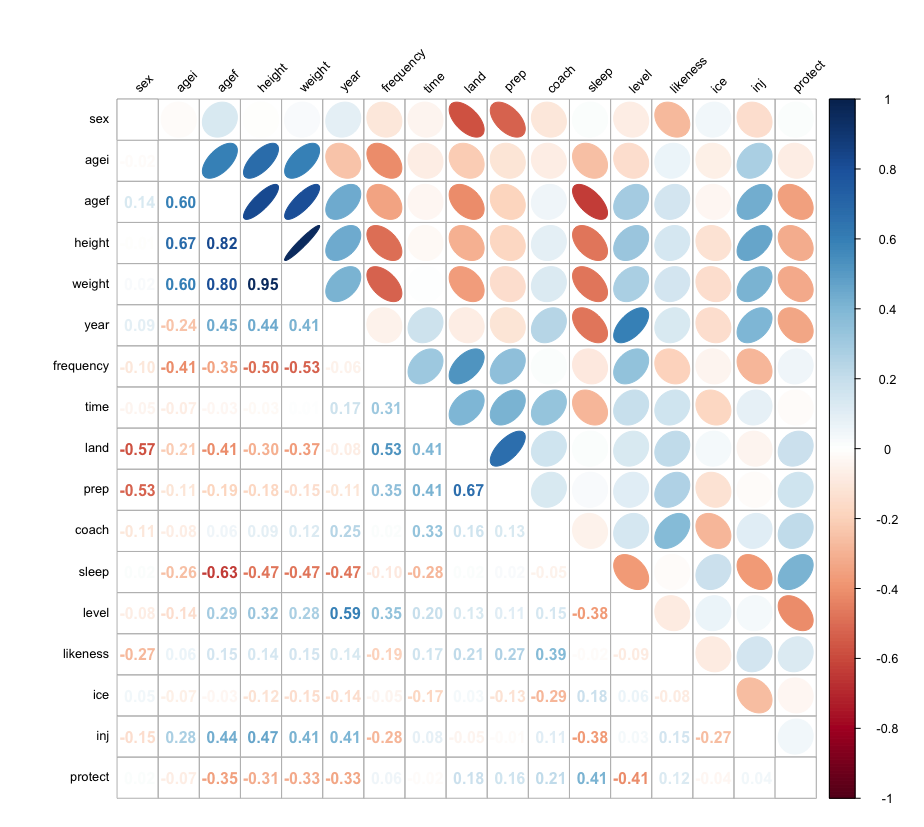
Figure 2: Correlation analysis graph between independent variables
Note: agei is age at start, agef is age now, height is height, weight is weight, year is years of skating, frequency is frequency of training per week, time is time per training session, land is off-ice session, prep is warm up time, coach is coach level, sleep denotes sleep time, level denotes sport level, likeness denotes favorite, ice denotes ice condition, inj denotes if injured, and protect denotes protective gear.
3.3.2. Dimensional reduction
3.3.2.1. Lasso regression
In this study, LASSO regression was used to downscale the 17 independent variables, and the results are shown in Figure 3. Figure 3a represents the relationship between Log Lamba and LASSO regression coefficients, with the increase of Lambda, the compression of the estimates of the coefficients of each independent variable of the model increases, and the coefficients of the independent variables that have a small impact on the dependent variable are compressed to 0, and the number of independent variables decreases. The right figure represents the relationship between Log Lambda and the coefficients of the independent variables, the vertical coordinate represents the mean square error of the model, the horizontal coordinate represents the Log Lambda, and the first dashed line represents the optimal solution when the MSE is minimum. In this study, the LASSO regression downscaling was used to obtain that height and years of training were the main factors affecting injuries in figure skaters.
a |
|
b |
|
Figure 3: Characteristic variable screening for LASSO regression
3.3.2.2. Stepwise regression
After LASSO regression, R language and stepAIC() function was used for dimensionality reduction, the smaller the AIC, the better the model fit, and finally height, years of training, gender, level, and starting age were the important factors affecting figure skating injuries.
3.3.3. Model validation
The ROC curves plotted in this study, see Figure 4, with the horizontal coordinate being the model specificity and the vertical coordinate being the model sensitivity. The area under the blue curve is the AUC value, and the closer the AUC value converges to 1, the better the fit of the model. The AUC value for the stepwise regression is 0.97, while the AUC value for the LASSO regression is 0.99, indicating a good fit for both.
a |
| b |
|
Figure 4: Model ROC plot. a) LASSO regression, b) stepwise regression.
3.3.4. Construction of line diagrams
In this study, the figure skaters' injury model was presented in the form of a line graph. Figure 5a shows the stepwise regression line graph, which includes 5 factors: age at start, gender, years of training, height, and level of free skating. Figure 5b shows the LASSO regression plot, including two factors: height and years of training, with Points denoting the individual scores of each factor at different values, Total Points denoting the sum of the individual scores, and Injury Risk denoting the probability of injury vertically corresponding to the Total Points.
a |
|
b |
|
Figure 5: Column plots of injury models. a) Stepwise regression column plots; b) Lasso regression column plots.
3.4. Application of models
For subjects, there is a choice of using a simpler (Fig. 5a) or more refined (Fig. 5b) column-line plot to calculate the probability of injury. Starting from the second row, the left column corresponds to all the data of one's own situation, and vertically corresponds to the points of the first row are added up to get the penultimate row of Total points, which corresponds to the last row of the Injury Risk, the higher the value means the higher the probability of injury.
4. Discussion
In this study, starting age, height, gender, weight, and balance were found to be the factors affecting the injuries of figure skating long-trainers through questionnaire method and physical fitness test. Then, a figure skating injury model was established by logistic regression. Compared with previous studies, we were able to screen the main risk factors during figure skating for Chinese adolescent long-distance figure skaters and construct a corresponding predictive model for risk assessment.
Starting age can lead to differences in the probability of injury in figure skaters. Jiang Hailan believes that the athlete's age determines the characteristics of physical development and has a close relationship with the formation of the level of physical function. As figure skating program is very skillful, many technical movements should be completed before certain age, if once miss the best age, it will cause great resistance to the formation of technical movements. At the same time, there are also some trainings that should be arranged after certain ages, otherwise, sports injuries will occur prematurely. Among them, the optimal age for initiation is 4 to 9 years[5] .
Height is also a factor that contributes to injury differences in figure skaters. Wang Mingbo et al. concluded that due to the high technical characteristics of the program's high degree of difficulty the height of the single skaters is relatively low[6] , so a higher height will make it more difficult to complete difficult maneuvers, thus increasing the probability of injury.
Gender can also lead to different injury patterns in figure skaters. Female figure skaters may have different biomechanical properties of the lower extremities due to a wider pelvic width and greater hip angle, increasing the risk of knee and ankle injuries. In addition, changes in hormone levels during a woman's menstrual cycle may also affect muscle and ligament flexibility and stability, increasing the risk of injury[7] .
The amount of sleep is also an important factor in a figure skater's chance of injury. Studies have shown that sleep deprivation can negatively impact an athlete's musculoskeletal recovery. In the article "0206 Sleep Opportunity and Duration are Related to Risk Injury in Elite Athletes," the authors analyzed the sleep records of 71 adult elite athletes for 7,237 nights between September 2018 and October 2019. The study found that on healthy days prior to injury, athletes slept significantly shorter hours (including naps) than on days without injury. Specifically, the average sleep duration before healthy days was 525±70 minutes compared to 508±77 minutes before injury, a significant difference (p<0.001). This finding suggests that a reduction in sleep opportunity and duration is strongly associated with an increased risk of injury, and that even an increase in sleep duration of approximately 20 minutes is effective in reducing the risk of injury[8] .
Ice conditions can also lead to changes in a figure skater's chance of injury. Uneven ice surfaces can cause athletes to experience irregular impacts while skating and jumping, increasing the risk of injuries to areas such as the ankles, knees and hips. Particularly during competition and training, athletes are more susceptible to injury when skating at high speeds or landing from high-intensity jumps if there are cracks or uneven areas in the ice surface. And the ambient temperature of the rink has a direct impact on the hardness of the ice surface. At lower temperatures, the ice surface becomes harder, and athletes take more impact when landing, increasing the risk of stress fractures and muscle strains. Conversely, at higher temperatures, the ice surface becomes softer, increasing friction and skating difficulty, as well as leading to technical errors and injuries[9] .
Years of training are also a key factor in athletic injuries in figure skaters, as the repetitive impact forces that figure skaters endure when executing complex jumps and spins accumulate with increasing years of training, causing long-term stress and wear and tear on the musculoskeletal system. Studies have shown that an increase in the number of jumps is directly proportional to the impact forces on landing, and these impact forces can lead to stress fractures and chronic injuries in areas such as the knee, ankle and hip[10] .
Body weight also contributes to injury differences in figure skaters because the jumps and spins in figure skating generate high intensity landing impacts, and the greater the body weight, the greater the impact at landing. Studies have shown that the impact force during a jump landing can be 5 to 8 times the athlete's body weight[11] . This means that heavier athletes are subjected to greater impact forces during landing, increasing the risk of injury to the lower extremities, especially the knees and ankles.
There is a strong correlation between level and sports injuries in figure skating, and it is true that figure skaters are more susceptible to sports injuries at lower levels due to a variety of factors such as technical immaturity, lack of physical fitness and coordination, inexperience, and possible psychological stress.
Balance plays a vital role in figure skating, not only does it directly affect the execution and stability of technical maneuvers, but it also plays a key role in the prevention of acute and chronic injuries. In jumping, precise balance control is required for both the take-off and the landing on the ice, otherwise sprains or falls may result. If you lose your balance in the air, your posture when landing on the ice will be unstable, which can easily lead to joint sprains or fractures. Lack of balance not only increases the risk of acute injuries, but can also lead to chronic injuries. Prolonged unsteady movements can increase the stress and strain on certain parts of the body, leading to overuse and fatigue of these areas, which can lead to chronic injuries such as tendonitis or joint wear and tear.
5. Conclusion
Through extensive questionnaire survey, physical fitness test and in-depth data analysis, this study comprehensively reveals the key factors affecting sports injuries in long-time figure skaters. Overall, height and years of skating experience were the main factors affecting figure skating sports injuries while gender, starting age, height and free skating rating were the secondary factors affecting figure skating sports injuries.
Specifically, our study suggests that athletes with older starting ages and taller heights face a greater risk of injury during training and competition. In addition, male athletes have a higher probability of injury compared to females, which may be related to physiologic construction and biomechanical differences. Increasing years of skating cumulatively increase the risk of injury, reflecting the wear and tear on the athlete's body from prolonged training. Athletes with lower free skating ratings are also more likely to suffer injuries due to technical immaturity and inexperience. We also found that adequate sleep is crucial for preventing sports injuries, while the condition of the ice surface, body weight, and balance are equally important factors that should not be ignored. These findings not only provide insights into the injury risk of Chinese junior figure skaters, but also provide a scientific basis for developing effective injury prevention strategies and training programs.
In summary, this study emphasized the role of multidimensional factors in figure skating injuries and established a comprehensive injury prediction model. The establishment of this model not only helps to reduce athletes' injury risk and improve their competitive performance and training efficiency, but also may have a positive impact on promoting the development and popularization of figure skating in China. In the future, we expect that this study will lead to more sport-specific injury prevention studies and provide more solid scientific support for athletes' health protection.
6. Limitations and prospects
The model constructed in this study integrates several factors such as starting age, height, gender, weight, balance, years of skating experience, free skating rating and sleep duration, aiming to provide strategies for preventing sports injuries and minimizing the probability of injuries for long-time trainees in junior figure skating. Although the generalizability of the model may be somewhat limited due to the limited sample size, the small number of participants in the fitness test, and the geographical distribution, future studies may improve the accuracy and applicability of the model by expanding the sample size and increasing the number of subjects.
Overall, the model is able to effectively identify the key risk factors faced by Chinese junior figure skaters in training and competition, and construct a corresponding risk assessment prediction model. This not only provides a theoretical basis for the development of scientific and effective training plans and nutritional protocols, but also opens up a new path for personalized training and health management of athletes. Through further research and practical application, we expect to achieve the dual goals of reducing sports injuries and optimizing training effects, thus supporting the long-term development of figure skating in China and the healthy growth of young athletes.
References
[1]. Lv Xiaoqiang,Zhang Zhicheng,Liu Yang. Prevention of sports injuries in adolescents in figure skating clubs[J]. Ice and Snow Sports,2021,43(06):36-39.
[2]. WANG Zi-Heng,YANG Guang. A review of sport injury mechanisms and preventive measures in youth figure skating[J]. China School Sports(Higher Education),2015,2(11):89-93.
[3]. Barr LV, Imam S, Crawford JR, Owen PJ. Skating on thin ice: a study of the injuries sustained at a temporary ice skating rink. Int Orthop. 2010 Jun;34(5):743 -6.
[4]. Oakland CD. Ice skating injuries: can they be reduced or prevented? Arch Emerg Med. 1990 Jun;7(2):95-9.
[5]. Jiang Hailan. Research on age characteristics and functional training of young figure skaters[J]. Journal of Harbin Institute of Physical Education,2019,37(03):22-26.
[6]. WANG Mingbo,FU Caishu,XU Zhaoxiao.Research on the physical characteristics of figure skaters in China for the 2022 Beijing Winter Olympic Games[C]//Chinese Society of Sports Science. Abstracts of the Thirteenth National Sports Science Congress--Topical Report (Physical Training Sub-committee). Institute of Sport Science, State General Administration of Sport; Heilongjiang Ice Training Center
[7]. Voelker, D. K., & Reel, J. J. (2020). "It's Just a Lot Different Being Male Than Female in the Sport": an Exploration of the Gendered Culture Around Body Pressures in Competitive Figure Skating. Women in Sport and Physical Activity Journal, 28(1), 11-19. Retrieved Jul 1, 2024
[8]. L Shaw, R Cohen, Y Altman, S Eyal, A Baharav, 0206 Sleep Opportunity and Duration are Related to Risk Injury in Elite Athletes, Sleep, Volume 43, Issue Supplement_1, April 2020
[9]. Ridge S, Bruening D, Charles S, Stahl C, Smith D, Reynolds R, Adamo B, Harper B, Adair C, Manwaring P, et al. IceSense Proof of Concept: Calibrating an Instrumented Figure Skating Blade to Measure On-Ice Forces. sensors. 2020; 20(24):7082.
[10]. Rauer T, Pape HC, Knobe M, Pohlemann T, Ganse B (2022) Figure skating: increasing numbers of revolutions in jumps at the European and World Championships.
[11]. Cheng, D. (2019). Breaking the Ice: Figure Skating. in: Sriraman, B. (eds) Handbook of the Mathematics of the Arts and Sciences.
Cite this article
Liu,X. (2025). Research on Injury Factors of Figure Skaters and Construction of Injury Prediction Model. Theoretical and Natural Science,68,70-83.
Data availability
The datasets used and/or analyzed during the current study will be available from the authors upon reasonable request.
Disclaimer/Publisher's Note
The statements, opinions and data contained in all publications are solely those of the individual author(s) and contributor(s) and not of EWA Publishing and/or the editor(s). EWA Publishing and/or the editor(s) disclaim responsibility for any injury to people or property resulting from any ideas, methods, instructions or products referred to in the content.
About volume
Volume title: Proceedings of the 3rd International Conference on Modern Medicine and Global Health
© 2024 by the author(s). Licensee EWA Publishing, Oxford, UK. This article is an open access article distributed under the terms and
conditions of the Creative Commons Attribution (CC BY) license. Authors who
publish this series agree to the following terms:
1. Authors retain copyright and grant the series right of first publication with the work simultaneously licensed under a Creative Commons
Attribution License that allows others to share the work with an acknowledgment of the work's authorship and initial publication in this
series.
2. Authors are able to enter into separate, additional contractual arrangements for the non-exclusive distribution of the series's published
version of the work (e.g., post it to an institutional repository or publish it in a book), with an acknowledgment of its initial
publication in this series.
3. Authors are permitted and encouraged to post their work online (e.g., in institutional repositories or on their website) prior to and
during the submission process, as it can lead to productive exchanges, as well as earlier and greater citation of published work (See
Open access policy for details).
References
[1]. Lv Xiaoqiang,Zhang Zhicheng,Liu Yang. Prevention of sports injuries in adolescents in figure skating clubs[J]. Ice and Snow Sports,2021,43(06):36-39.
[2]. WANG Zi-Heng,YANG Guang. A review of sport injury mechanisms and preventive measures in youth figure skating[J]. China School Sports(Higher Education),2015,2(11):89-93.
[3]. Barr LV, Imam S, Crawford JR, Owen PJ. Skating on thin ice: a study of the injuries sustained at a temporary ice skating rink. Int Orthop. 2010 Jun;34(5):743 -6.
[4]. Oakland CD. Ice skating injuries: can they be reduced or prevented? Arch Emerg Med. 1990 Jun;7(2):95-9.
[5]. Jiang Hailan. Research on age characteristics and functional training of young figure skaters[J]. Journal of Harbin Institute of Physical Education,2019,37(03):22-26.
[6]. WANG Mingbo,FU Caishu,XU Zhaoxiao.Research on the physical characteristics of figure skaters in China for the 2022 Beijing Winter Olympic Games[C]//Chinese Society of Sports Science. Abstracts of the Thirteenth National Sports Science Congress--Topical Report (Physical Training Sub-committee). Institute of Sport Science, State General Administration of Sport; Heilongjiang Ice Training Center
[7]. Voelker, D. K., & Reel, J. J. (2020). "It's Just a Lot Different Being Male Than Female in the Sport": an Exploration of the Gendered Culture Around Body Pressures in Competitive Figure Skating. Women in Sport and Physical Activity Journal, 28(1), 11-19. Retrieved Jul 1, 2024
[8]. L Shaw, R Cohen, Y Altman, S Eyal, A Baharav, 0206 Sleep Opportunity and Duration are Related to Risk Injury in Elite Athletes, Sleep, Volume 43, Issue Supplement_1, April 2020
[9]. Ridge S, Bruening D, Charles S, Stahl C, Smith D, Reynolds R, Adamo B, Harper B, Adair C, Manwaring P, et al. IceSense Proof of Concept: Calibrating an Instrumented Figure Skating Blade to Measure On-Ice Forces. sensors. 2020; 20(24):7082.
[10]. Rauer T, Pape HC, Knobe M, Pohlemann T, Ganse B (2022) Figure skating: increasing numbers of revolutions in jumps at the European and World Championships.
[11]. Cheng, D. (2019). Breaking the Ice: Figure Skating. in: Sriraman, B. (eds) Handbook of the Mathematics of the Arts and Sciences.










